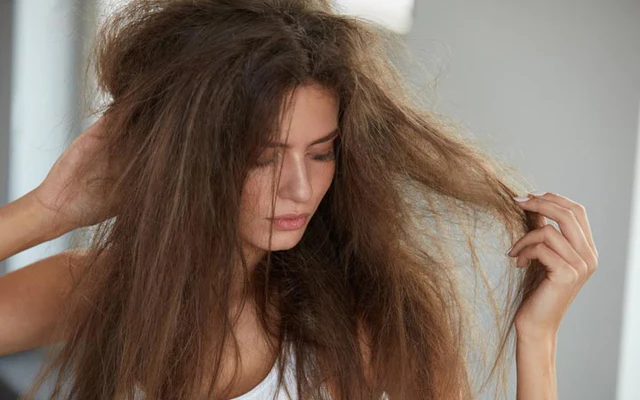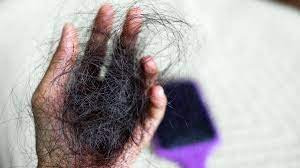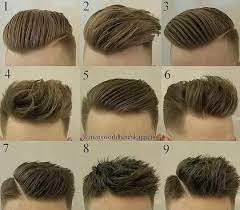Having healthy and strong hair is something that many people strive for, yet it can be difficult to know what is considered healthy and unhealthy hair.
Unhealthy hair can have a variety of causes such as environmental factors, poor nutrition, or a lack of proper care. In this article, we will explore the various factors that contribute to unhealthy hair and the most common symptoms to look out for.
We will also discuss tips for preventing unhealthy hair and how to make sure your locks stay in optimal condition.
Causes of Unhealthy Hair
Unhealthy hair can be a result of various factors. Some common causes include:
Excessive use of heat styling tools
Unhealthy hair is often characterized by issues such as breakage, split ends, and dryness. Heat styling tools are a common culprit for these problems.
Excessive use of heat-styling tools can cause damage to the hair shaft, leading to weakened strands that are more susceptible to breakage and split ends.
Hair that has been damaged by heat styling may also be more prone to dryness and often looks dull. Damaged hair is also more difficult to style, as it can lead to tangling, frizziness, and a lack of control over your hairstyle.
Chemical treatments
Chemical treatments are often used to change the structure and appearance of hair, but they can also cause damage.
Hair that has been processed with chemical treatments such as coloring, relaxing or perming can become dry, brittle and prone to breakage.
These treatments often contain harsh chemicals that strip the hair of its natural oils and disrupt its delicate pH balance.
Lack of proper nutrition
Hair is a reflection of our overall health, and lack of proper nutrition can significantly affect its appearance.
When we don’t consume enough nutrients, our hair becomes weaker, duller and prone to breakage. For instance, not consuming enough protein can lead to hair loss as well as thinning strands.
Similarly, a deficiency in biotin or vitamins B6 and B12 can cause brittle strands that easily break.
Signs of Unhealthy Hair
Unhealthy hair can be a result of various factors such as poor diet, lack of care and environmental factors.
Split ends
One common sign of unhealthy hair is split ends, which occur when the hair cuticle is damaged and splits into two or more strands. This leads to a rough and unpalatable texture.
The hair gets easily tangled and becomes more prone to breakage. Dullness and dryness Another sign of unhealthy hair is dullness and dryness.
When the body’s natural oil production slows down, the hair will become dull and dry.
Dryness
Another sign of unhealthy hair is dryness, which can make the hair appear dull and lifeless.
Dryness may be caused by using harsh chemicals on the hair, overexposure to heat styling tools or not moisturizing the scalp enough.
The best way to avoid dryness is to use a deep conditioner once a week and only use heat-styling tools on the hair when necessary. It’s also important to moisturize the scalp with a natural oil such as castor oil.
Brittle hair
Brittle hair is also a sign of an unhealthy mane. Brittle hair snaps easily when pulled or combed due to a lack of moisture or protein in the strands.
If your hair is brittle, you’ll want to make sure you’re using shampoos and conditioners that contain moisture-replenishing ingredients such as hyaluronic acid. Split ends are another sign of an unhealthy mane.
Dandruff or an itchy
Dandruff or an itchy scalp may indicate that your mane isn’t healthy either.
An itchy scalp could mean excessive oil buildup, fungal infections, stress, hormonal changes or allergies that contribute to flaking skin on your scalp- dandruff. A dry, flaking scalp may indicate a dry scalp or psoriasis.
If you have dandruff, you’ll want to make sure that you’re only using a shampoo formulated for a dry scalp and they are gentle enough to use daily.
Treating Unhealthy Hair
Unhealthy hair can be characterized by an array of problems, including dullness, dryness, brittleness, split ends, and excessive shedding.
These issues are often caused by various factors such as poor diet, hormonal imbalances, overuse of styling tools, and environmental pollution.
Treating unhealthy hair requires a multifaceted approach that takes into account the underlying cause and severity of the problem.
Nourishing shampoo and conditioner
One way to begin treating unhealthy hair is to switch to a nourishing shampoo and conditioner that are specifically designed for damaged hair.
Look for a shampoo and conditioner that contains vitamins, herbal extracts, and fatty acids. Hydrating hair mask A hair mask is another easy way to treat damaged hair.
Apply the mask to dry hair after shampooing and leave it on for about 10 minutes before rinsing.
Natural ingredients
Look for products that contain natural ingredients like keratin protein or argan oil which can help strengthen strands from the inside out. Many shampoos on the market are designed to treat damaged hair.
Avoid chemicals
Additionally, it’s important to avoid using harsh chemicals or heat styling tools frequently as they can further
damage already compromised hair. Instead, opt for gentler cleansing and styling products that contain natural ingredients.
Massage scalp
Another effective way to promote healthy hair growth is through scalp massage with essential oils like lavender or tea tree oil.
Massaging your scalp gently increases blood flow to your follicles which encourages growth while also relieving tension in your head.
Balance diet
Finally, eating a balanced diet full of vitamins and minerals like biotin (found in eggs), vitamin E (found in nuts), zinc (found in seafood) can help improve overall health from within so you will see healthier results on the outside as well!
Conclusion
Unhealthy hair is characterized by dryness, split ends, and lack of shine.
It is often caused by over-processing with chemicals like relaxers or dyes, harsh styling techniques like tight braids or high heat from styling tools.
Unhealthy hair can also be a result of poor nutrition and hydration; the body needs the right balance of vitamins and minerals to support strong hair growth.
Ensuring healthy hair requires consistent maintenance practices that nourish it from root to tip.
These include shampooing regularly with gentle products, conditioning after every wash, keeping the scalp clean and hydrated through regular moisturizing treatments, avoiding excessive heat from styling tools whenever possible, and getting regular trims to prevent split ends from spreading further up the shafts.
Attaining healthy and happy hair is not something that happens overnight.
It takes time, dedication, patience and an understanding of what works best for your specific hair type.
But once you establish a routine that works well for you – one that incorporates nourishing products and habits – you’ll soon start feeling more confident in your tresses as they become fuller, shinier and easier to manage!






Be First to Comment